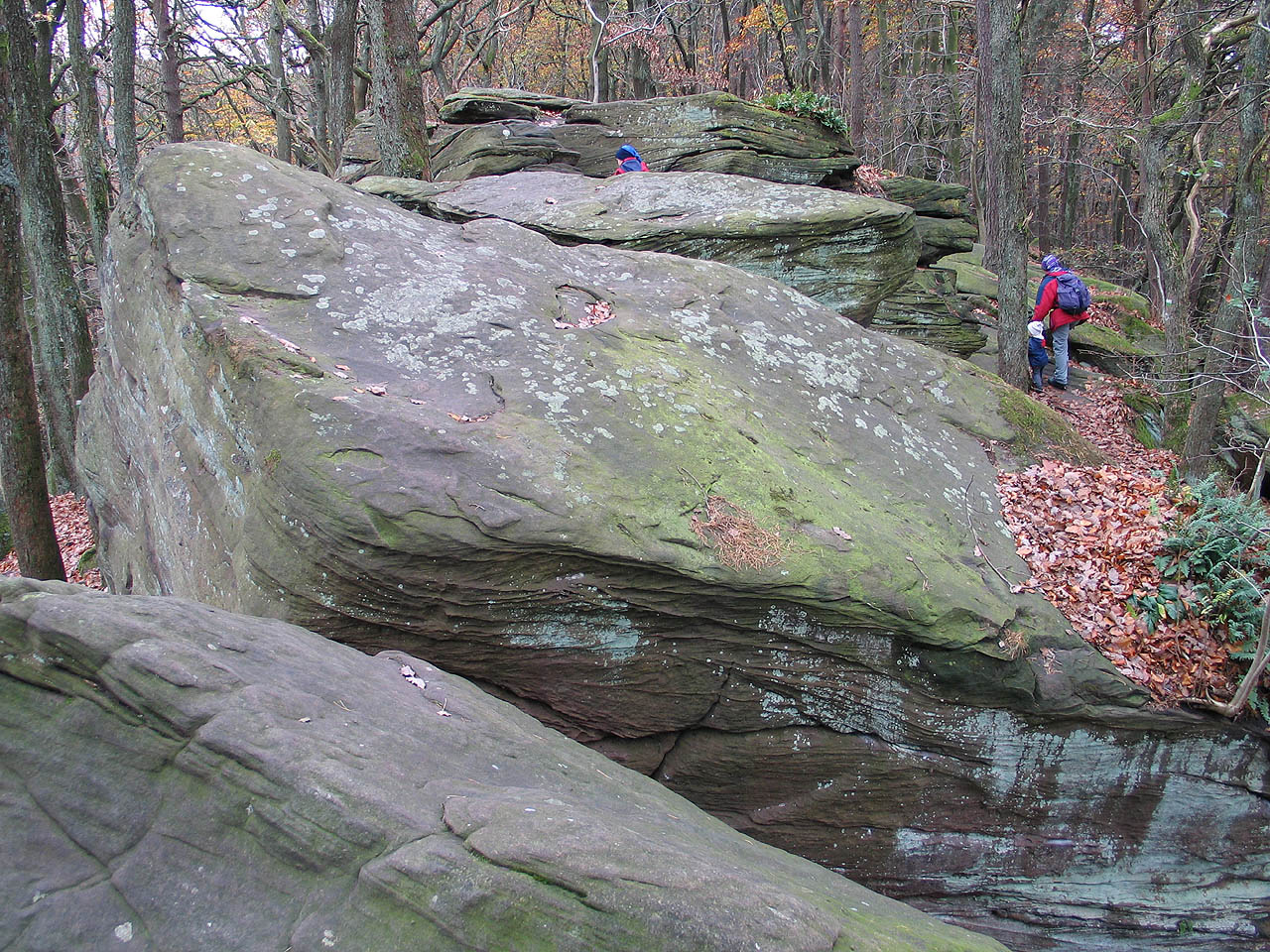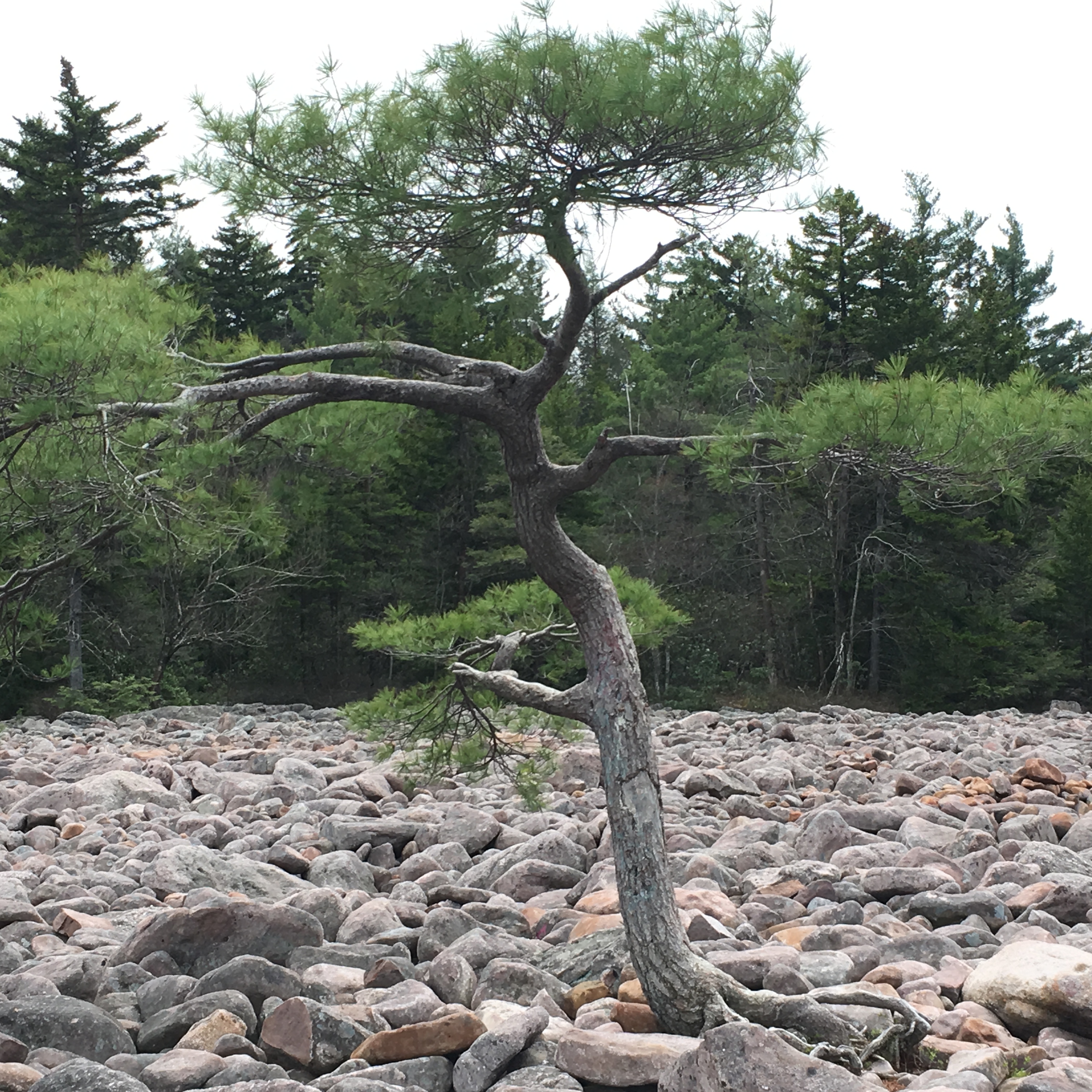Blockfield on:
[Wikipedia]
[Google]
[Amazon]




 A blockfieldWhittow, John (1984). ''Dictionary of Physical Geography''. London: Penguin, 1984, pp. 66 and 190. .
(also spelt block fieldLeser, Hartmut, ed. (2005). ''Wörterbuch Allgemeine Geographie'', 13th ed., dtv, Munich, pp. 107 and 221. .
), felsenmeer, boulder field or stone field is a surface covered by boulder- or block-sized angular rocks usually associated with
A blockfieldWhittow, John (1984). ''Dictionary of Physical Geography''. London: Penguin, 1984, pp. 66 and 190. .
(also spelt block fieldLeser, Hartmut, ed. (2005). ''Wörterbuch Allgemeine Geographie'', 13th ed., dtv, Munich, pp. 107 and 221. .
), felsenmeer, boulder field or stone field is a surface covered by boulder- or block-sized angular rocks usually associated with




 A blockfieldWhittow, John (1984). ''Dictionary of Physical Geography''. London: Penguin, 1984, pp. 66 and 190. .
(also spelt block fieldLeser, Hartmut, ed. (2005). ''Wörterbuch Allgemeine Geographie'', 13th ed., dtv, Munich, pp. 107 and 221. .
), felsenmeer, boulder field or stone field is a surface covered by boulder- or block-sized angular rocks usually associated with
A blockfieldWhittow, John (1984). ''Dictionary of Physical Geography''. London: Penguin, 1984, pp. 66 and 190. .
(also spelt block fieldLeser, Hartmut, ed. (2005). ''Wörterbuch Allgemeine Geographie'', 13th ed., dtv, Munich, pp. 107 and 221. .
), felsenmeer, boulder field or stone field is a surface covered by boulder- or block-sized angular rocks usually associated with alpine
Alpine may refer to any mountainous region. It may also refer to:
Places Europe
* Alps, a European mountain range
** Alpine states, which overlap with the European range
Australia
* Alpine, New South Wales, a Northern Village
* Alpine National P ...
and subpolar climates and periglaciation. Blockfields differ from scree
Scree is a collection of broken rock fragments at the base of a cliff or other steep rocky mass that has accumulated through periodic rockfall. Landforms associated with these materials are often called talus deposits. Talus deposits typically ...
s and talus slope
Scree is a collection of broken rock fragments at the base of a cliff or other steep rocky mass that has accumulated through periodic rockfall. Landforms associated with these materials are often called talus deposits. Talus deposits typically ha ...
in that blockfields do not apparently originate from mass wasting
Mass wasting, also known as mass movement, is a general term for the movement of rock or soil down slopes under the force of gravity. It differs from other processes of erosion in that the debris transported by mass wasting is not entrained in ...
s. They are believed to be formed by frost weathering below the surface. An alternative theory that modern blockfields may have originated from chemical weathering
Weathering is the deterioration of rocks, soils and minerals as well as wood and artificial materials through contact with water, atmospheric gases, and biological organisms. Weathering occurs ''in situ'' (on site, with little or no movement ...
that occurred in the Neogene
The Neogene ( ), informally Upper Tertiary or Late Tertiary, is a geologic period and system that spans 20.45 million years from the end of the Paleogene Period million years ago ( Mya) to the beginning of the present Quaternary Period Mya. ...
when the climate was relatively warmer. Following this thought the blockfields would then have been reworked by periglacial action.
Most known blockfields are located in the northern hemisphere. Examples can be found in Abisko National Park
Abisko National Park ( sv, Abisko nationalpark) is a National Park in Sweden, established in 1909.
Geography
Abisko is situated in the Swedish province of Lapland near the Norwegian border (distance approx. by railway), and belongs to ...
in Sweden, Snowdonia National Park in Wales, the Great End
Great End is the most northerly mountain in the Scafell chain, in the English Lake District. From the south it is simply a lump continuing this chain.
From the north, however, it appears as an immense mountain, with an imposing north face ri ...
-Scafell Pike
Scafell Pike () is the highest and the most prominent mountain in England, at an elevation of above sea level. It is located in the Lake District National Park, in Cumbria, and is part of the Southern Fells and the Scafell massif.
Scafell P ...
ridge in England
England is a country that is part of the United Kingdom. It shares land borders with Wales to its west and Scotland to its north. The Irish Sea lies northwest and the Celtic Sea to the southwest. It is separated from continental Europe ...
, and Hickory Run Boulder Field and River of Rocks in the Appalachian Mountains
The Appalachian Mountains, often called the Appalachians, (french: Appalaches), are a system of mountains in eastern to northeastern North America. The Appalachians first formed roughly 480 million years ago during the Ordovician Period. The ...
of the United States
The United States of America (U.S.A. or USA), commonly known as the United States (U.S. or US) or America, is a country Continental United States, primarily located in North America. It consists of 50 U.S. state, states, a Washington, D.C., ...
. All examples except the first one are outside present day subpolar climate areas, and have thus traditionally been seen as relict landform
A landform is a natural or anthropogenic land feature on the solid surface of the Earth or other planetary body. Landforms together make up a given terrain, and their arrangement in the landscape is known as topography. Landforms include hills, ...
s from past times when these areas were under periglaciation.
The term "felsenmeer" comes from the German meaning "sea of rock". In a felsenmeer or blockfield, freeze-thaw
Frost weathering is a collective term for several mechanical weathering processes induced by stresses created by the freezing of water into ice. The term serves as an umbrella term for a variety of processes such as frost shattering, frost wedg ...
weathering has broken up the top layer of the rock, covering the underlying rock formation with jagged, angular boulders. Freeze-thaw or frost weathering occurs when water that is trapped along microcracks in rock expands and contracts due to fluctuations in temperature above and below the freezing point. Felsenmeers are formed ''in situ'', meaning that they are not transported during or after their creation.
Characteristics
Surface
Felsenmeers only form on slopes of 25° or lower. A steeper angle results in transport of the blocks due to gravity. This creates a talus slope, rather than a felsenmeer. Crude sorting with boulder imbrication can occasionally be seen on the surface of felsenmeers.Profile
The depth of the boulder field depends on the slope angle, rock types, age, and erosional history. However, a reasonable average for felsenmeer depth is approximately 1m. Ballantyne (1998) defines three types of felsenmeer profiles: Type 1 consists of boulders overlying a matrix of fines at some depth below the surface. Type 2 consists of boulders supported by a cohesionless sandy matrix that continues from the surface down through the profile. Type 3 also consists of boulders supported by a matrix, but differs from Type 2 in that the matrix consists of silt and/or clay rather than sand.Occurrence
Due to the slope requirements they are most commonly found onplateaus
In geology and physical geography, a plateau (; ; ), also called a high plain or a tableland, is an area of a highland consisting of flat terrain that is raised sharply above the surrounding area on at least one side. Often one or more sides ha ...
. Basalt
Basalt (; ) is an aphanitic (fine-grained) extrusive igneous rock formed from the rapid cooling of low-viscosity lava rich in magnesium and iron (mafic lava) exposed at or very near the surface of a rocky planet or moon. More than 90 ...
and sedimentary rock
Sedimentary rocks are types of rock that are formed by the accumulation or deposition of mineral or organic particles at Earth's surface, followed by cementation. Sedimentation is the collective name for processes that cause these particles ...
s often produce larger, more numerous felsenmeers than other types of rock. Blockfields are most often found in high mountain periglacial regions near the Arctic Circle, especially in Iceland
Iceland ( is, Ísland; ) is a Nordic island country in the North Atlantic Ocean and in the Arctic Ocean. Iceland is the most sparsely populated country in Europe. Iceland's capital and largest city is Reykjavík, which (along with its ...
, the Canadian
Canadians (french: Canadiens) are people identified with the country of Canada. This connection may be residential, legal, historical or cultural. For most Canadians, many (or all) of these connections exist and are collectively the source of ...
arctic and Norway
Norway, officially the Kingdom of Norway, is a Nordic countries, Nordic country in Northern Europe, the mainland territory of which comprises the western and northernmost portion of the Scandinavian Peninsula. The remote Arctic island of ...
and are still active in parts of Central Europe that were not covered by ice sheets. In the Southern Hemisphere inactive
Inactive is a TRPV channel in invertebrates
Invertebrates are a paraphyletic group of animals that neither possess nor develop a vertebral column (commonly known as a ''backbone'' or ''spine''), derived from the notochord. This is a groupin ...
blockfields can be found in the Lesotho Highlands, and the Prince Edward Islands
The Prince Edward Islands are two small uninhabited islands in the sub-Antarctic Indian Ocean that are part of South Africa. The islands are named Marion Island (named after Marc-Joseph Marion du Fresne, 1724–1772) and Prince Edward Islan ...
.
Age
Felsenmeers are, typically, relatively young geomorphological features. Most felsenmeers formed during or since the lastice age
An ice age is a long period of reduction in the temperature of Earth's surface and atmosphere, resulting in the presence or expansion of continental and polar ice sheets and alpine glaciers. Earth's climate alternates between ice ages and gre ...
(approximately 20,000 years ago). Others may be pre-glacial features that survived glaciation beneath cold-based glaciers.Matthews, John A. (ed.), ''Encyclopedia of Environmental Change'', 3-volume set,
Swansea: Sage, 2014. Their specific age can be determined using surface exposure dating
Surface exposure dating is a collection of geochronological techniques for estimating the length of time that a rock has been exposed at or near Earth's surface. Surface exposure dating is used to date glacial advances and retreats, erosion histo ...
, a technique that works best on materials which have been exposed to cosmic rays with little interference from trees or soils.
See also
* Stone run *Weathering
Weathering is the deterioration of rocks, soils and minerals as well as wood and artificial materials through contact with water, atmospheric gases, and biological organisms. Weathering occurs '' in situ'' (on site, with little or no movement ...
References
{{Authority control Rock formations Geomorphology Geotopes